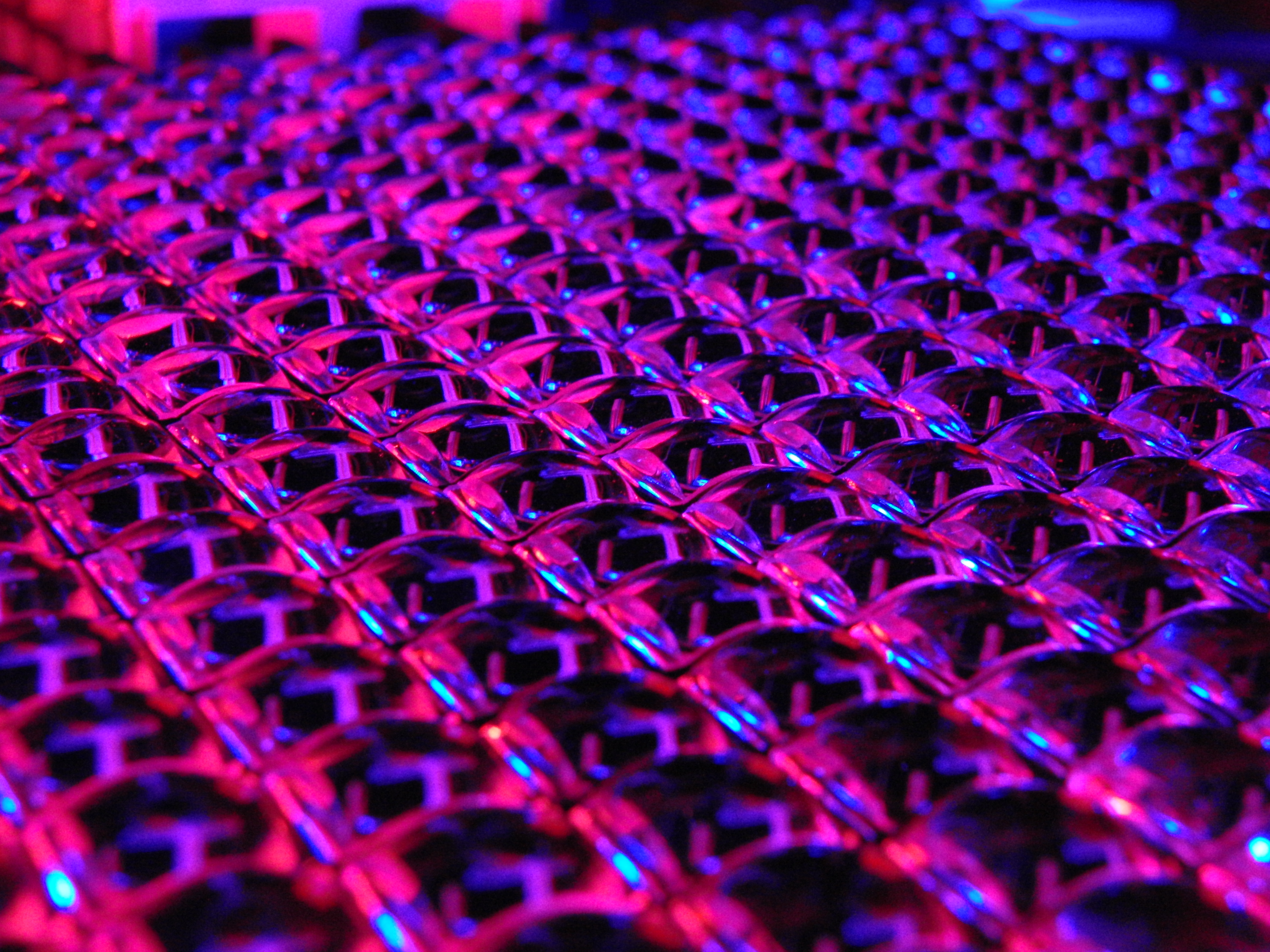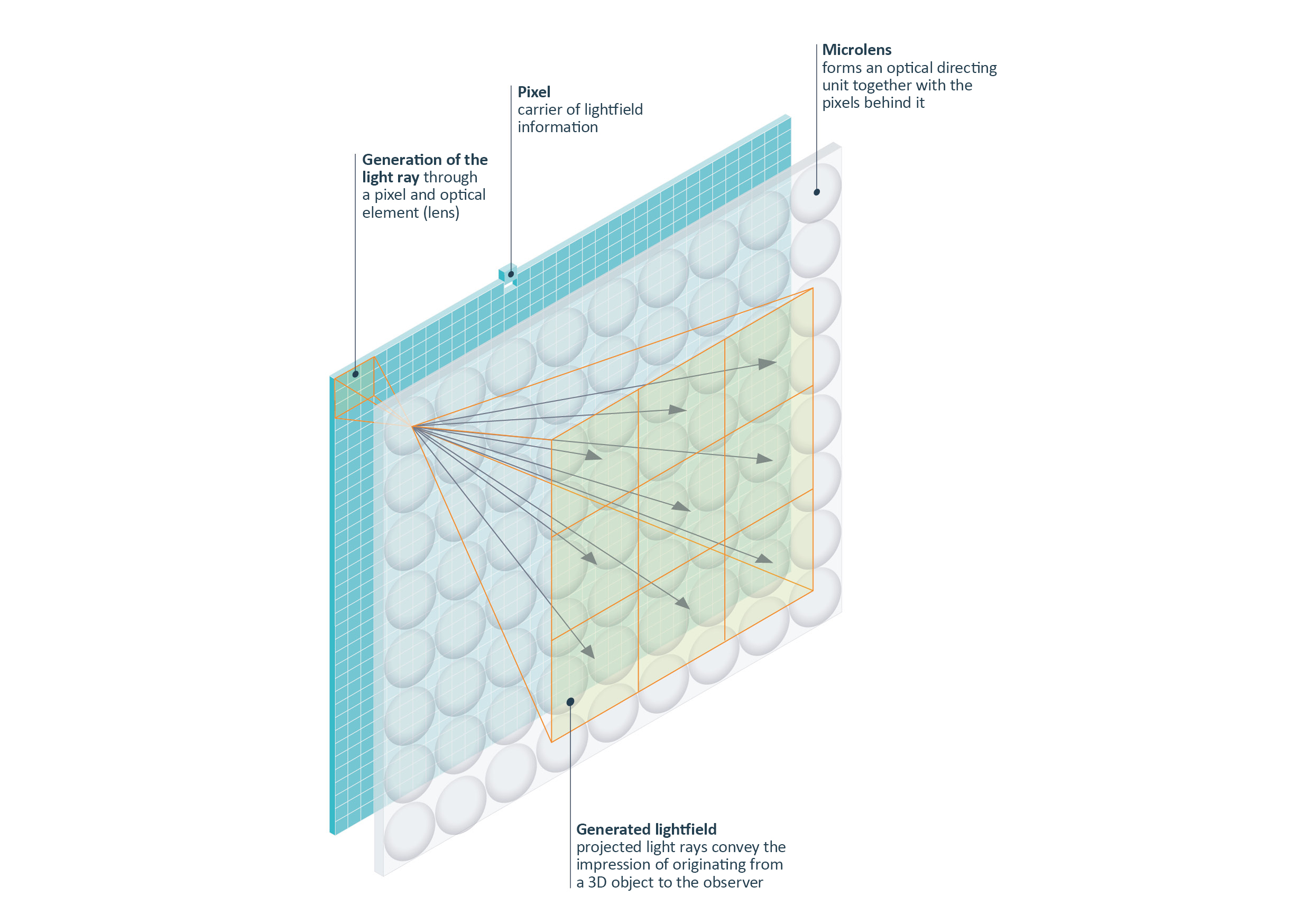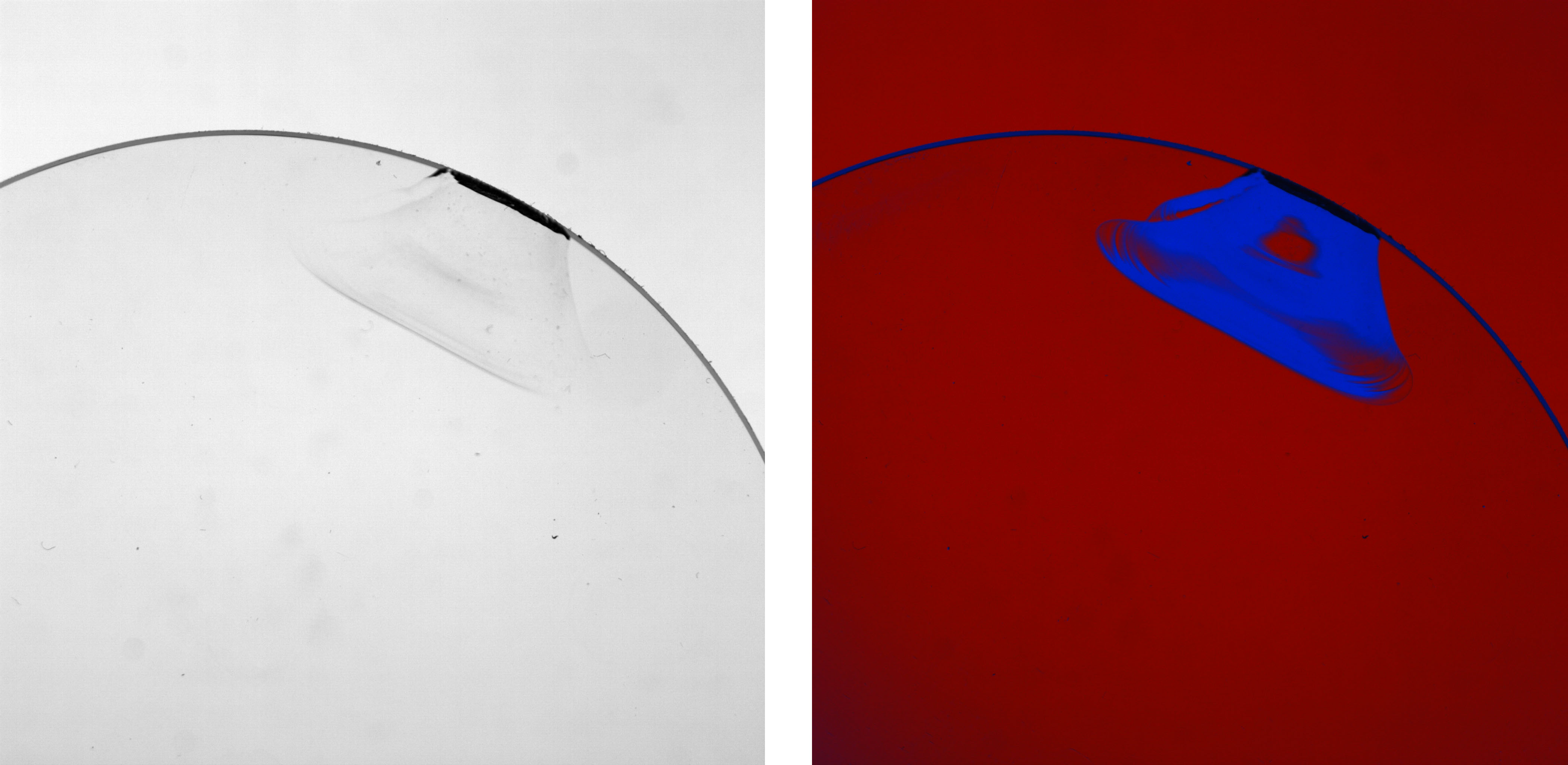The classic PC screen on our desk can only display 2D image content, which looks identical from every viewing direction. A light field display, on the other hand, can simultaneously project different information in different directions. Imagine a display in the center console of the car that shows the driver the navigation while the front passenger can watch a movie at the same time. We go even further and project different image content in up to 1,600 different directions at the same time.
Functional principle
A light field emitter is a planar light source in which both the position and the direction of light emission can be controlled. Our prototype combines a monitor with an array of lenses mounted in front of it at the distance of the focal lengths of the individual lenses. If a pixel is activated behind an individual lens, the light field display emits a parallel bundle of rays whose direction of propagation is defined by the spatial position of the activated pixel behind the individual lens. In this way a 4D light field is projected into space. Its spatial resolution corresponds to the number of individual lenses in the lens array; the angular resolution is determined by the number of monitor pixels behind each individual lens.
 Fraunhofer Institute of Optronics, System Technologies and Image Exploitation IOSB
Fraunhofer Institute of Optronics, System Technologies and Image Exploitation IOSB 


